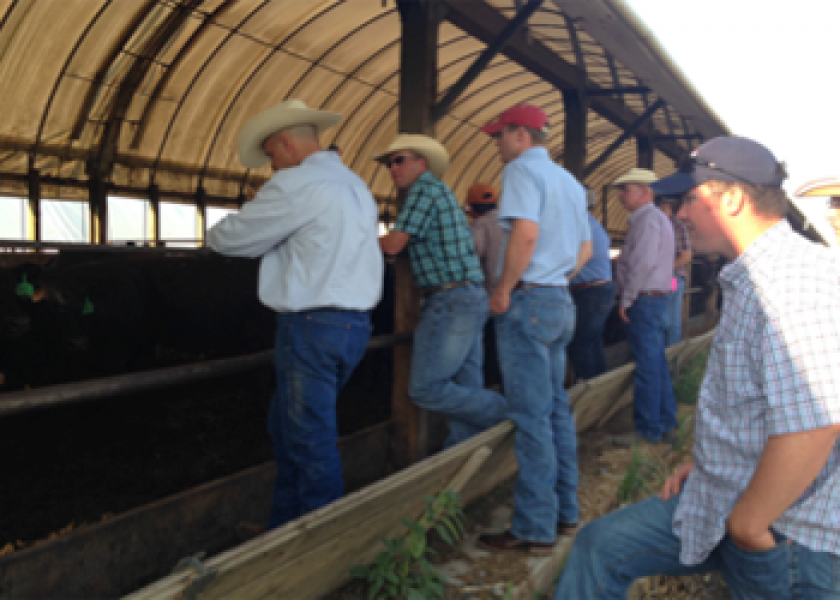beefSD Tour: Hoop Beef Systems

Hoop barns a consideration for northern beef producers.
By: Adele Harty, Cow/Calf Field Specialist, SDSU Extension
The beefSD Class 2 participants recently completed a bus tour that had stops in Eastern South Dakota, Iowa, Illinois and Minnesota. The group had the opportunity to tour multiple production systems and learn more about the marketing components of the beef industry on a global scale. A series of articles will summarize a portion of the stops and the value to the beef industry.
The purpose of beefSD is to provide beginning farmers and ranchers an opportunity to gain knowledge and expertise to help them succeed in the farming and ranching business. There are six key components to the two-year course, with one being the out-of-state travel study trips.
Grand Meadow Feeders and Hoop Beef Systems® was one of the first stops. With the recent land price escalation, it is more challenging for young people to "buy" into the business of beef production due to the large capital investment required and the fact that most young producers have little equity. Hoop Beef Systems® is an alternative that utilizes a controlled environment to produce beef cattle. As the tour began, multiple participants thought it would be a system used to feed cattle to slaughter, however the system that we toured is being used for cow/calf pairs. The research that is currently being done at Grand Meadow Feeders has 240 cows in a 400 foot long hoop barn. The cows are divided into three groups that calve at three different times per year. This system has taken the weather factor out of the equation; therefore producers can be more flexible in calving season and target alternative marketing times with the calves, rather than the heavy fall run. The cows that are in this system weigh 900-1100 pounds and are maintained at a body condition score of 5. Nutritional management has to be monitored closely, otherwise the cows will become over conditioned in a short period of time. Tim Bickett, System Consultant for Hoop Beef Systems® led the tour and indicated that the maintenance requirements of the cows are decreased by approximately 30% in this system, which results in an overall decrease in feed needs throughout the year.
The hoop barn is 36 feet wide with a 4 foot awning over the feed bunk. The system has a concrete apron behind the feedbunk that is cleaned weekly and a deep bed that is cleaned twice a year, but new bedding is added weekly. These systems are customized to the needs of the producer and the size of the herd. There are multiple factors that make these systems intriguing to look at and evaluate the efficacy in the Northern Plains environment. Just a few of the characteristics that make these hoop systems work include: no wind chill, hair coats are always dry, no summer sun causing heat stress, and no spoiled feed. There is also a cash value to spreading the manure on surrounding crop fields.
Many would assume that disease and flies would be a concern in this system; however when speaking with Mr. Bickett, neither of these have been a problem at Grand Meadow Feeders. It was very interesting to see the low number of flies, with around five-ten flies per animal. They stated that they had not used any chemical fly control either.
There is a significant cost to build one of these facilities, but it isn’t nearly as much as land would cost to run the same number of head. One of the biggest considerations with this type of system is the location relative to reliable, cost-effective feed resources.
For more information about Hoop Beef Systems® and Grand Meadow Feeders, visit the Hoop Beef System website.







